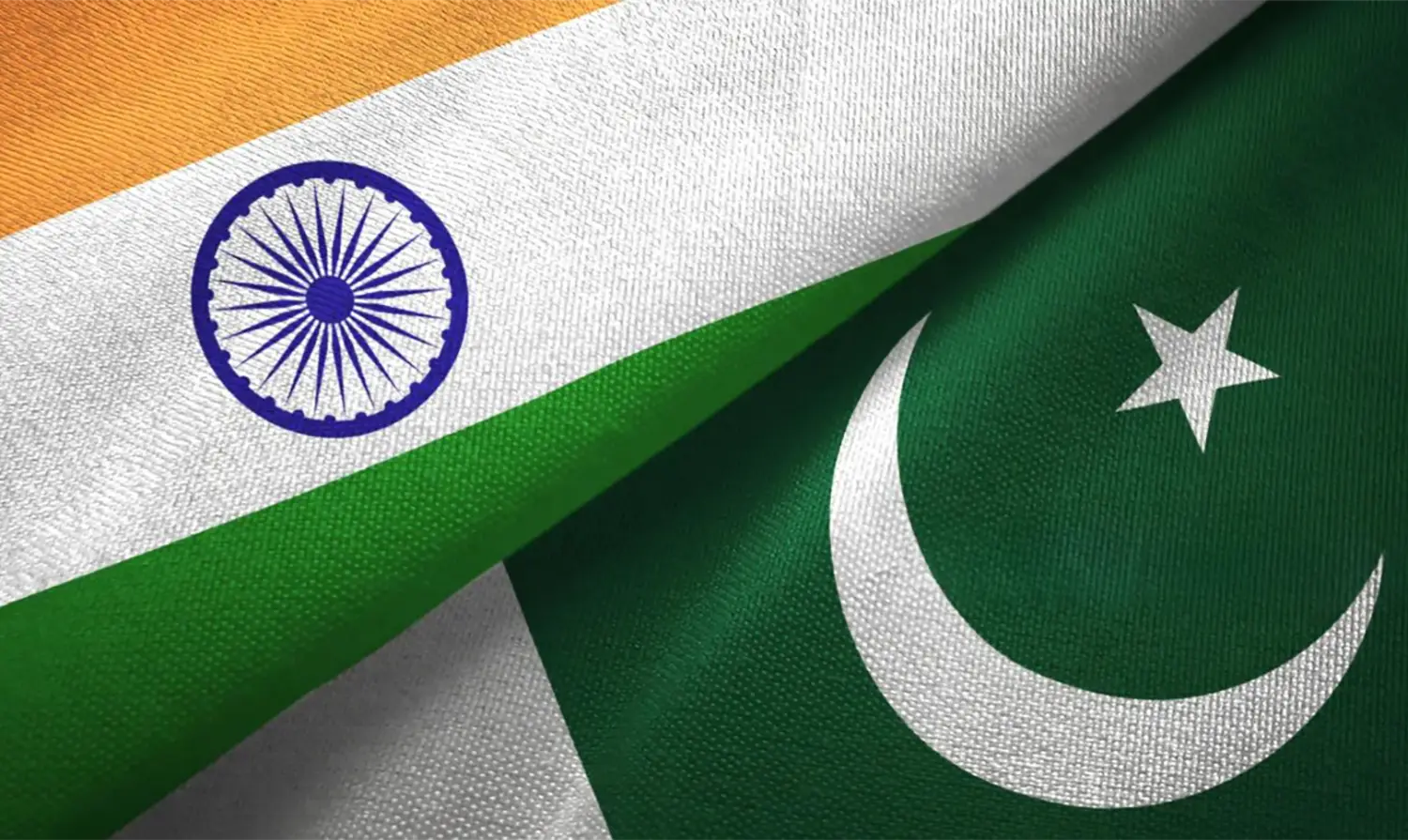
Sarmad Wali Khan
Sarmad Wali Khan is an early career researcher and a Political Science graduate from Government College University Lahore. His areas of interest are religion and politics, nationalism, federalism, and post-colonial state-building. Currently, he is associated with the Beaconhouse National University’s Center for Policy Research. He can be reached at sarmad.wali@bnu.edu.pk.
Can any responsible leader authorise a conventional military strike, capable of giving a decisive blow to Pakistan, on the assumption that it will not escalate to the nuclear level by accident or otherwise?1 Sharat Sabharwal considers this in his book, India’s Pakistan Conundrum: Managing a Complex Relationship (2020). Logically, no responsible ruler would provoke another nuclear state with such recklessness that could escalate to nuclear conflict, endangering millions of lives in minutes. However, logic has a tragic history of losing battles to emotions, let alone hate and self-aggrandising hyper-nationalism.
Given the recent tumult and rather precarious situation between the two nuclear powers of South Asia, India and Pakistan, in the aftermath of the Pahalgam terror attack, Sabharwal’s book becomes a timely read, calling on Indian policy influencers and decision-makers to make choices that are informed, objective, and rational, based in the regional and global realities. The writing is poised and evocative, often giving an air of a journalistic memoir, as he journeys through his observations and experiences during his stay in Pakistan for 8 years as a diplomat.
The book’s primary audience is India, as it intends to suggest a blueprint of practical policy options for India in managing its relationship with Pakistan. Following the know-thy-neighbour/enemy policy, the author divides the book into two sections: the first deals with the objective reality of the Pakistani state as to what it is and what it is not, and the second part discusses different contentious issues in the Indo-Pak relation and how it has evolved over decades, what has worked and what hasn’t, and what are viable policy options for India to pursue.
Sabharwal argues that Pakistan has four major problems: religious extremism, the military, an unstable economy, and ethnic and religious fault lines. He makes a case that Pakistan was founded on religious ideology and an exclusionary basis, hence the subsequent constitutional accentuation in the form of the Objective Resolution in 1949, which was, in effect, not enough to safeguard the rights of the minority. He blames the founding fathers for using religion as a foundation for Pakistan, as it planted the seeds for intolerance and extremism. The use of religion as a foundational national ideology opened a Pandora’s box of demands for Islamisation from various groups. This gave religious parties and clerics considerable power over policy and constitution-making processes, so much so that a prime minister had to give in to the pressure of the right wing to declare the Ahmadi community as non-Muslim in 1974. The author argues that religion has been used to legitimise hatred against India, as well as usher in the myopic view in the collective psyche that India means Hindu and Pakistan means Muslim, reducing the complex and diverse landscape of both polities. The historical facts pointed to are right. However, the blame on religion as a base is a bit misplaced. If Pakistan had not been founded on religion, would the situation be any different? It can be argued that inheriting a colonial military-bureaucratic oligarchy with its systems of patronage is a bigger problem, irrespective of whether the new state had embraced religion or secularism. Such structural anomalies are so objective that everyone on the political spectrum would agree. India chose secularism, yet is confounded by problems that are analogous to Pakistan in terms of diversity management and minority rights. The dead body of Nehruvian secularism lies close at hand, and it’s rotten, decaying into a politics of Hindi majoritarianism: the war-mongering, aggrandising dreams of Akhand Bharat, Hindutva’s puritanism, and the violent exclusion of Muslims and Dalits, to say the least.
Secondly, he argues that Pakistan’s core issues stem from the military, the true power centre with veto authority over major domestic and foreign policies. The army dominates media narrative, education, and India policy, while consuming a large and growing share of the federal budget, despite the country’s fragile economy. He highlights the civil-military divide, arguing that the army exploits political weaknesses and foments rivalries to maintain control. Politicians, aware of where real power lies, often enable this dynamic. The military, he argues, uses India as a bogeyman to justify its oversized budget, sustaining hostility that surfaces periodically in rhetoric, or the four wars that both countries have fought, or interference in each other’s affairs.
Thirdly, the author has rightly pointed out how Pakistan is stuck in a debt cycle due to economic instability. It has a large population to feed and manage, with a significant defence budget, so it relies on external patrons for support. Its geostrategic location has been of pivotal use, and it has rented it for dollars to the USA, both in the Cold War and in the War on Terror, and is now partnering with China for the China Pakistan Economic Corridor (CPEC). Moreover, Pakistan has been largely reliant on the idea of borrowed growth and has been caught in a dependency cycle with the International Monetary Fund (IMF). Hence, its economy is fragile and has become aid-reliant.
Fourth, Pakistan’s ethnic and sectarian diversity has produced persistent internal fault lines. Sub-nationalist movements resent the Punjab-centric state, which dominates the budget, bureaucracy, and military due to its demographic weight. The author highlights the centre’s inequitable resource distribution and the military’s heavy-handed tactics in peripheral regions, which have fueled centrifugal forces. He cites the War on Terror’s impact on the Federally Administered Tribal Area (FATA) and the emergence of the Pashtun Tahafuz Movement (PTM) as a challenge to state authority. In Balochistan, separatist sentiment is resurging, particularly amid grievances over exclusion from CPEC’s benefits, such as from a share in the opportunities that Chinese development might bring. Sindh is also mentioned, where muhajir discontent has largely been subdued following the crackdown on Muttahida Qaumi Movement (MQM).
Despite giving an account of all these fault lines, the author does not categorise Pakistan as a failed or failing state; rather, it states that Pakistan is a dysfunctional state. Pakistan is the 6th largest nuclear-armed military in the world, but in terms of service delivery, it is yet to function at its optimal level.
Sabharwal thinks Pakistan’s hostility towards India is rooted in its identity crisis that it has tried to forge its identity in negation to the Indian identity, which is plural, ancient, and diverse, something that nascent Pakistan lacks. However, he briefly attempts to engage the views of Aitzaz Ahsan and Javed Jabbar, not Benedict Anderson or Partha Chatterjee, on identity construction, only to arrive at how India’s identity subscribes to Nehruvian oneness within diversity from one part of the United India to another. Though a lot can be said on the subject of identity formation in modern nation-states, Hindustan was never a united empire but rather a fragmented empire in a loose pseudo-federal arrangement2. Hence, a preponderance of anti-India sentiment might be there and so imposed by the ruling elite. However, it does not lend credence to the fact that the official identity or nationalism of one diverse modern nation-state is better than the other when they have both been created, or, borrowing it from Hobsbawm, ‘invented’ in retrospect, and imposed from above!
These structural weaknesses, asserts Sabharwal, actively distort Pakistan’s posture towards India. Thus, the second half of the book shifts from diagnosis to prescription: What can India realistically do? In this part, Sabharwal covers moments of halt and progress in Indo-Pak relations and what lessons these events can teach Indian policymakers. For him, the India-Pakistan issues boil down to two core issues: terrorism and Kashmir. Both have fought wars, engaged in an arms race, and tried to leverage their position at different forums internationally. However, nothing has come of it till today. Rather than engaging in the oft-moralist stance, the author brazenly states that Pakistan uses proxies to keep the Kashmir issue alive, whereas India has annexed its special status through revoking of Article 370 and 35-A of the Indian constitution.
The author argues, for Pakistan, Kashmir stands central to the Indo-Pakistan equation as an illegal occupation, while for India, it is its internal matter. India sees Pakistan primarily as an exporter of terrorism and blames Pakistan for a series of high-profile attacks, including the 2001 Parliament attack, the 2008 Mumbai attacks, and the 2016 Uri attack—accusing it of providing safe havens to groups like Lashkar-e-Taiba and Jaish-e-Mohammed. Attempts at composite dialogue have repeatedly stalled, with each side insisting on prioritising its own core concern: Kashmir for Pakistan and terrorism for India. In this deadlock, India faces limited and often ineffective options to contain, coerce, or manage the relationship. As such India must adopt a calibrated, multi-pronged strategy across diplomatic, military, and regional fronts to protect its interests and promote long-term stability.
Sabharwal thinks that the persistent thorn in the bilateral relationship has been Kashmir, and given that no side is willing to concede, it’s high time that, rather than remain stuck in this situation forever, both states solve it by making the Line of Control (LOC) an international border with allowance for travel across the lines. The author takes a pragmatic stance, pushing back against hawkish narratives in India by arguing that a stable, functioning Pakistan is in India’s best interest. He warns that a weakened Pakistan—also involved in Afghanistan for strategic depth—could become a global security threat if extremist groups gain access to nuclear weapons. Rejecting the view of Pakistan as a monolith, he highlights emerging voices within its civil society and academia that advocate for peaceful ties and admire India’s economic progress. He sees potential in renewed people-to-people engagement and believes such efforts, even if unsuccessful in the past, should not be dismissed. While trade between the two countries remains minimal and offers limited leverage, he suggests it could become a valuable avenue for cooperation. Similarly, he argues that weaponising water is not a feasible strategy for India, as Pakistan’s water issues stem more from internal mismanagement than Indian control.
He emphasises that engaging with the Pakistani military to sort out the issues would be a futile exercise, as institutional change takes time and is slow, while also ruling out the idea of compliance by force. He urges India that indiscriminate tactical attack on Pakistan can lead to a tit-for-tat situation, without results for India, to which Pakistan can respond in kind.
India’s Pakistan Conundrum is a comprehensive and somewhat concrete account of the dynamics of the power and politics in Pakistan. It offers a unique perspective grounded in firsthand diplomatic experience, distinguishing it from more academic or overtly critical works, such as Husain Haqqani’s Pakistan: Between Mosque and Military or Christine Fair’s Fighting to the End: The Pakistan Army’s Way of War. While those books often adopt a structuralist or security-centric lens, Sabharwal takes a more pragmatic and policy-oriented approach, focusing on what has and hasn’t worked in India’s Pakistan strategy. Though one can differ with various minor details, one must remember that the author is a diplomat from India, so the burden of resolving theoretical riddles is not his to carry. However, what he must be applauded for is acknowledging Pakistan’s problems and giving India some practical policy suggestions to not go down the domineering, hawkish lane of coercion through force, recognising the military and nuclear capabilities of the other state and avoiding nuclear escalation.
Last, but not least, the author has focused too much on Pakistan and how India can deal with it, whereas the analysis would have been more holistic if Indian domestic politics and electoral sloganeering against Pakistan, the rise of Hindutva, and subsequent saffronisation had been considered as to what drives India in this relationship. The anti-Pakistan and anti-Muslim rhetoric that Modi and the Bharatiya Janata Party (BJP) weaponise begs the question: is Pakistan the only rogue player in this game? Has India ever planned anything nefarious over the decades? It’s difficult to talk peace when the whole Indian media, as witnessed in the recent conflict, lost whatever credibility it had left. Hence, returning to Sabharwal’s original question—do responsible leaders knowingly engage in nuclear brinkmanship? The answer is affirmative: when hate overpowers reason and perceptions get clouded by nationalist euphoria, even ‘responsible’ leaders gamble with apocalyptic ends. As Modi did on the night of 7th May with Operation Sindoor. Emotionally, then, the answer is yes—a countdown to mutual annihilation!
- Sharat Sabharwal, India’s Pakistan Conundrum: Managing a Complex Relationship (New Delhi: Routledge, 2020), 186. ↩︎
- Katharine Adeney, “Federal Formation and Consociational Stabilisation: The Politics of National Identity Articulation and Ethnic Conflict Regulation in India and Pakistan” (Government Department, London School of Economics, University of London), 50. ↩︎

Sarmad Wali Khan
Sarmad Wali Khan is an early career researcher and a Political Science graduate from Government College University Lahore. His areas of interest are religion and politics, nationalism, federalism, and post-colonial state-building. Currently, he is associated with the Beaconhouse National University’s Center for Policy Research. He can be reached at sarmad.wali@bnu.edu.pk.
“These views belong to the author and do not reflect the views of the Policy Research Institute for South Asia (PRISA) or its team.”


